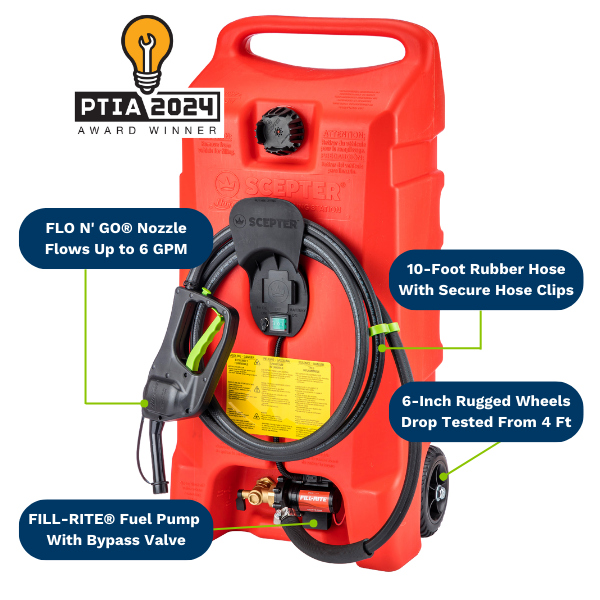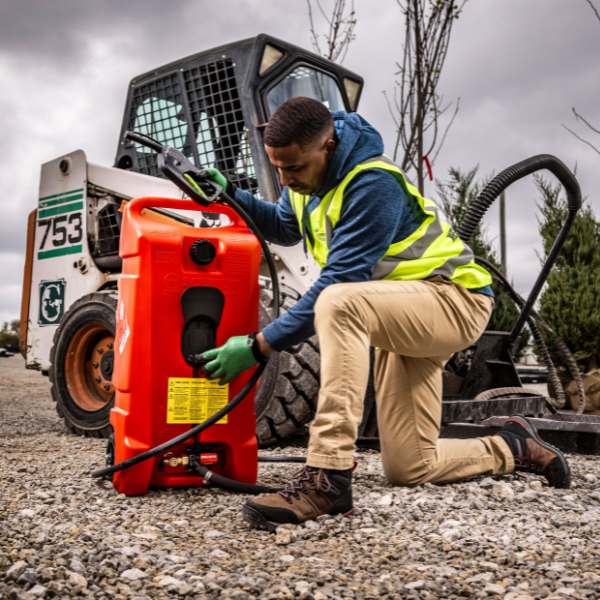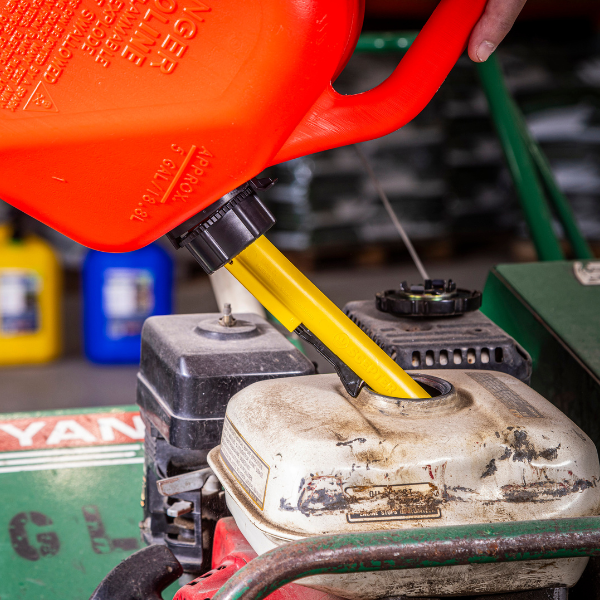
When to Choose a Gas Caddy Over a Gas Can
What’s one thing every homeowner probably has in their garage or shed?
A gas can.
From lawn mowers to snow blowers to chainsaws, most outdoor power equipment requires gas. Add in the kids’ go-karts or 4-wheelers, maybe even a boat, and you’re looking at a lot of trips back and forth to the gas station.
For efficiency’s sake, you might be thinking about upgrading to a larger capacity fuel caddy to eliminate some of those trips. But is a 14-gallon gas caddy overkill for those times when all you need to fuel is your weed whacker?
Let’s look at the differences between gas caddies and gas cans—and when you might choose one over the other.
3 Key Differences Between a Gas Caddy and a Gas Can
- Design
Gas Caddy: A fuel caddy is a large, robust container that tends to come with wheels or in a cart-like design. Fuel caddies are intended for storing and dispensing fuel in larger quantities. They usually come with a pump or nozzle for easier refueling.

Above, key features of a powered gas caddy.
Gas Can: Also known as a “Portable Fuel Container,” a gas can is a smaller, handheld container made for easy transport of fuel in limited quantities. Small gas cans are designed for short-term use and feature a spout for pouring. Spout design varies by manufacturer but must include safety features.

Above, features of the SmartControl® gas can spout.
- Capacity
Gas Caddy: Has a much higher capacity, often holding 14 to 30 gallons or more, and is designed to supply fuel for multiple vehicles or larger machinery that you might see used in landscaping or construction. These are usually available for gasoline or diesel fuel. Gas caddies can typically be found at specialty dealerships or home improvement stores.
Gas Can: Usually holds smaller amounts of fuel, typically ranging from 1 to 5 gallons, and is meant for individual use or small equipment. You can usually pick up a 1-gallon or 2-gallon gas can at the nearest convenience store. You may need to head to a bigger box store or home improvement store to find more sizes. Portable fuel containers are also designed to store and transport diesel and kerosene. The color of the container indicates which fuel is stored inside. Red represents gasoline, yellow represents diesel, and blue represents kerosene.
- Intended Use
Gas Caddy: Used for dispensing a higher volume of fuel to vehicles or machinery in a more efficient manner, often in commercial, industrial, and professional settings where frequent refueling is needed. Gas caddies are also useful for outdoor recreation uses, like off-roading and boating. The wheeled nature of a gas caddy makes it easy to take a high volume of gas down a dock or across dirt roads.

A gas caddy like the 14-gallon Powered Fueling Station, shown above, is extremely helpful for refueling large landscaping equipment.
Gas Can: Primarily used for storing and transporting fuel for occasional use, such as for lawnmowers, chainsaws, or emergency fuel storage. A 1 or 2-gallon gas can is every stranded driver’s savior! And when it comes to storm season, having an extra 5 gallons of gas can help make evacuations much easier.

Smaller capacity gas cans are ideal for the typical homeowner.
Conclusion
Ultimately, the choice of a gas caddy or a gas can will depend on how much fuel you use on a regular basis and what type of equipment you’re refueling. No matter the size, be sure you’re choosing a fuel container built with safety in mind. Gasoline is extremely flammable. Child-proof features and flame mitigation devices (FMD) will keep you and others safe. For more information on gas can safety, visit our Safe Use and Awareness page.